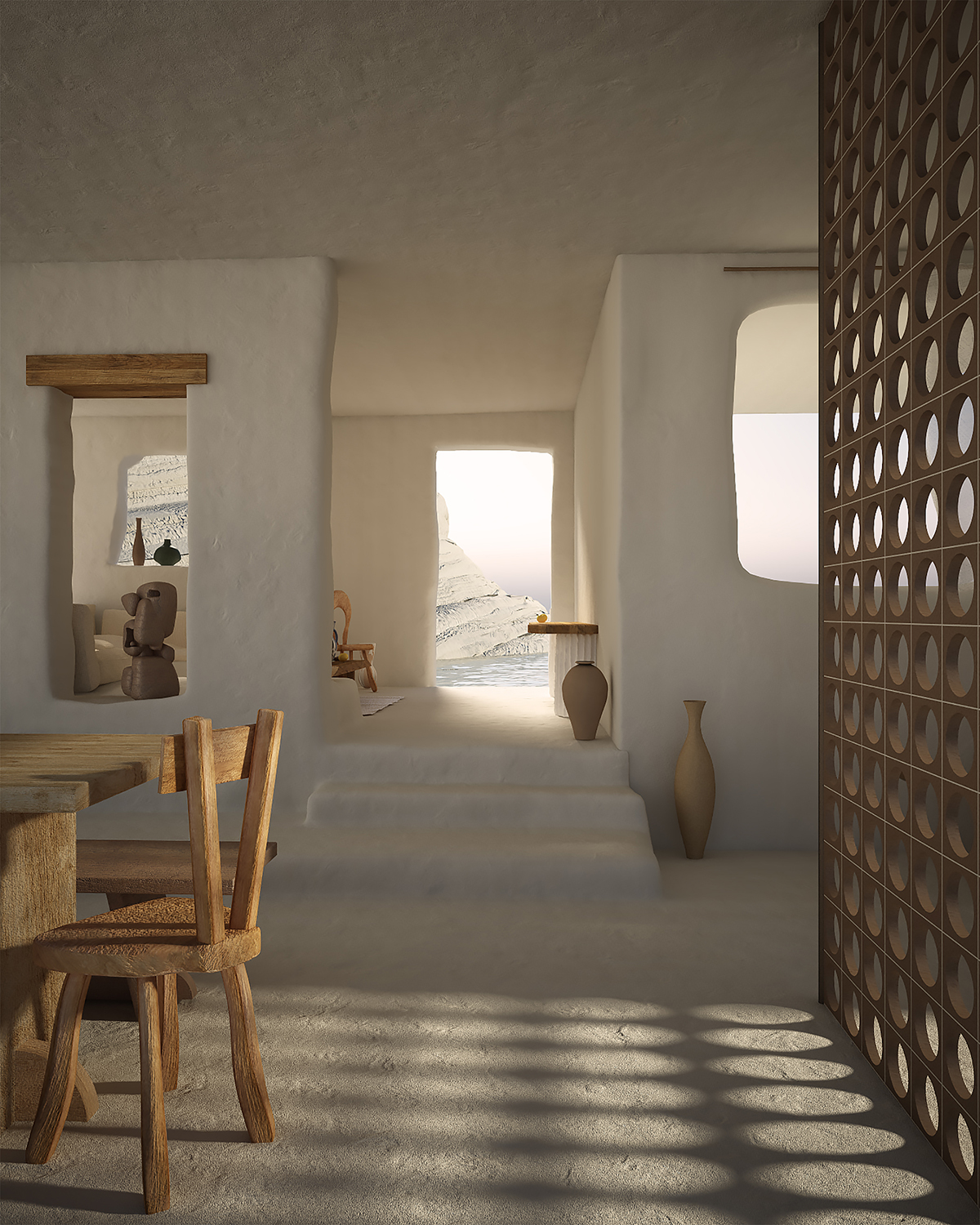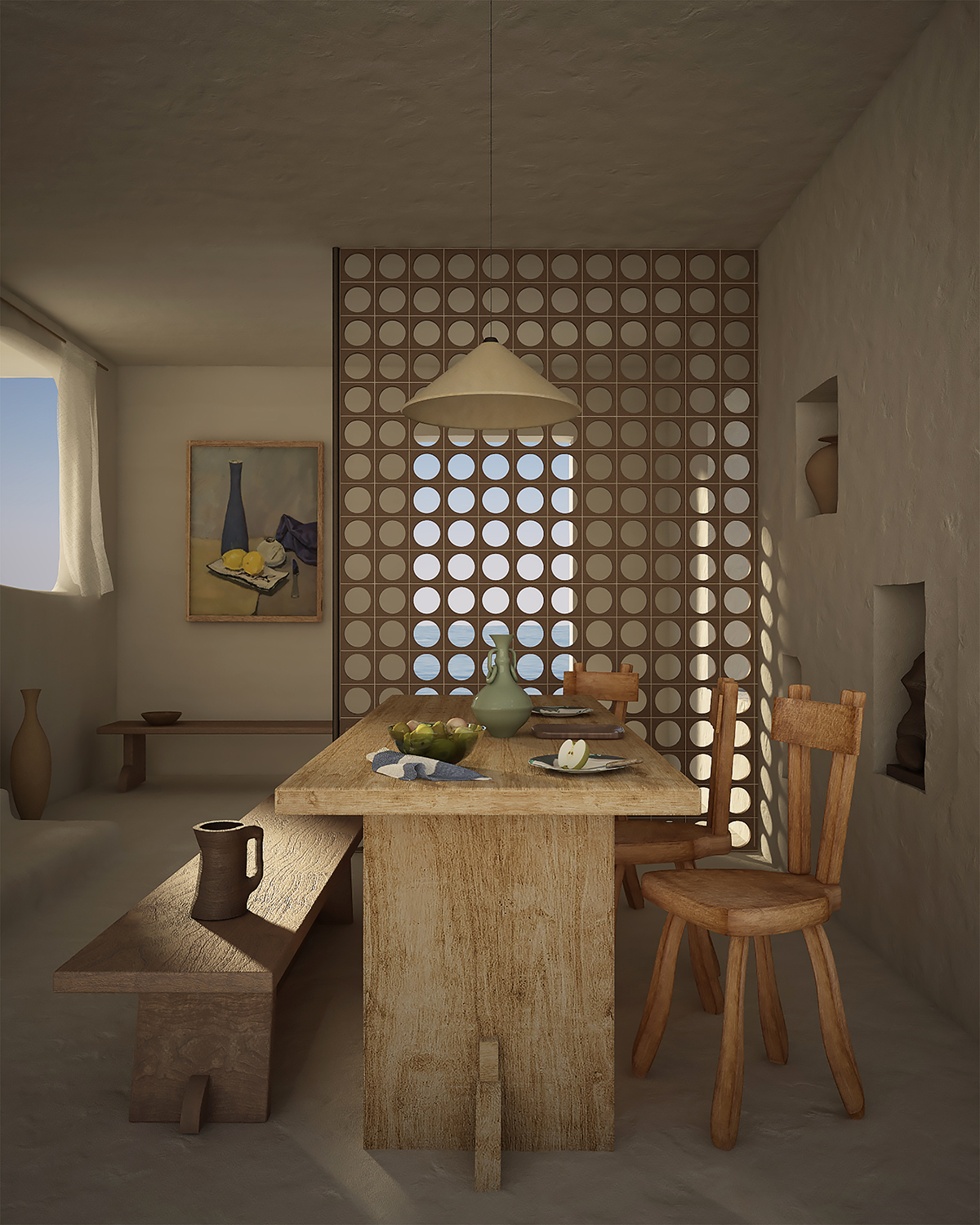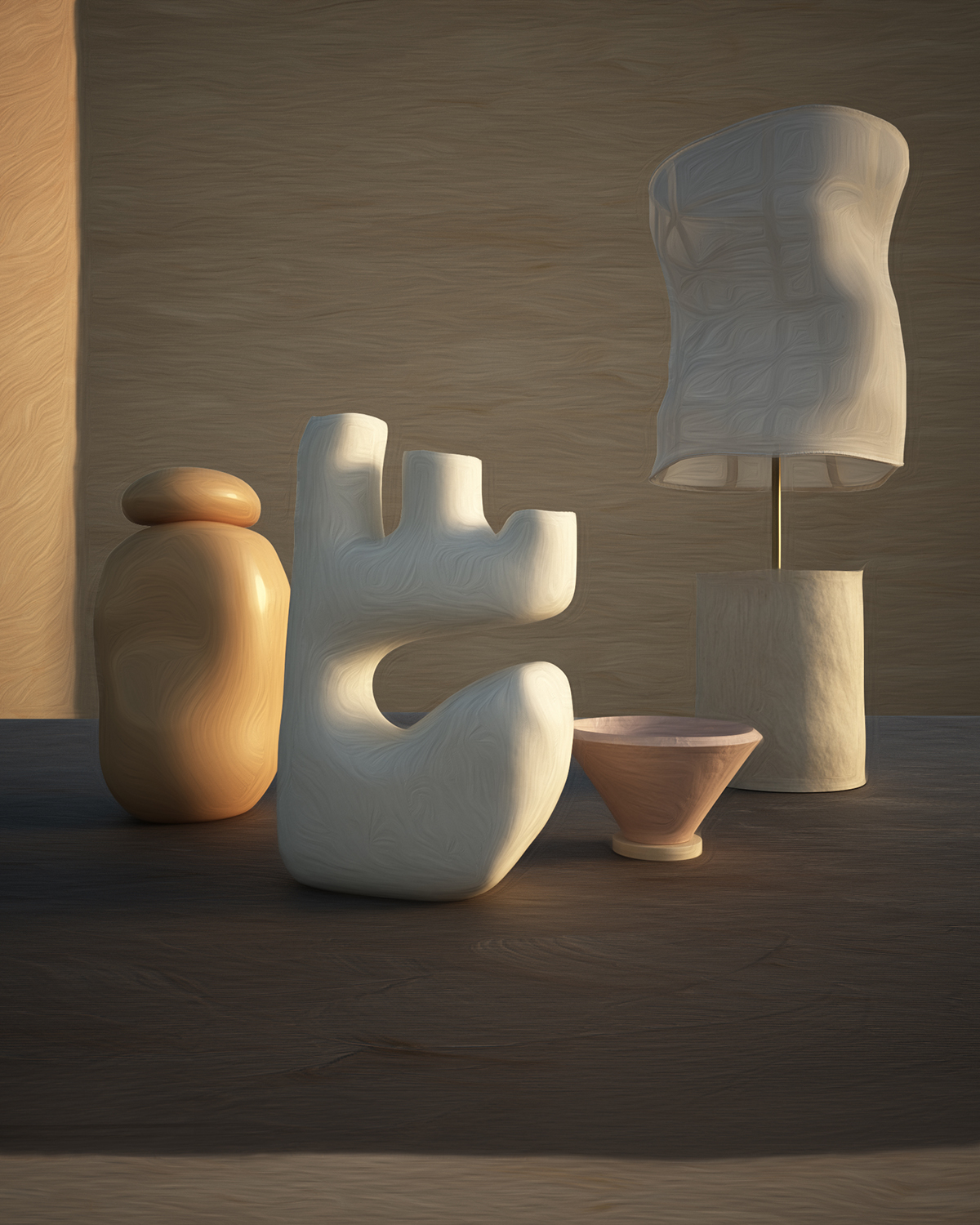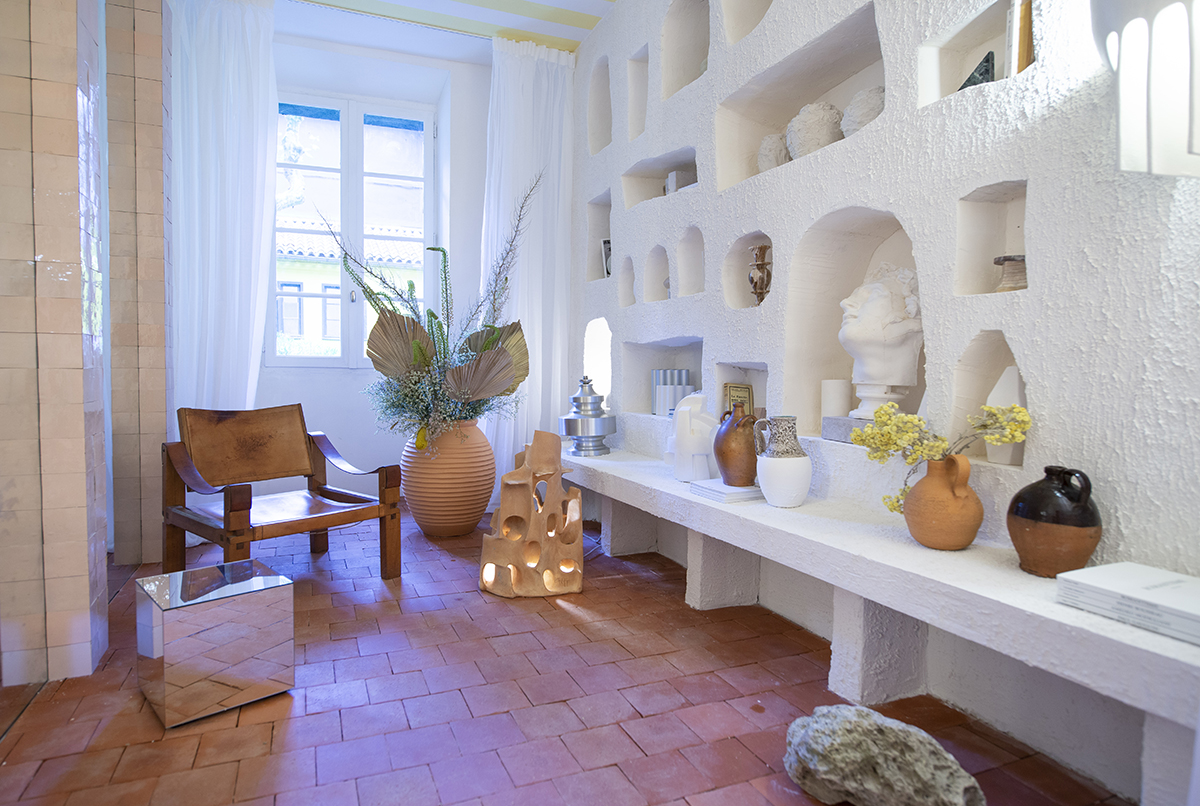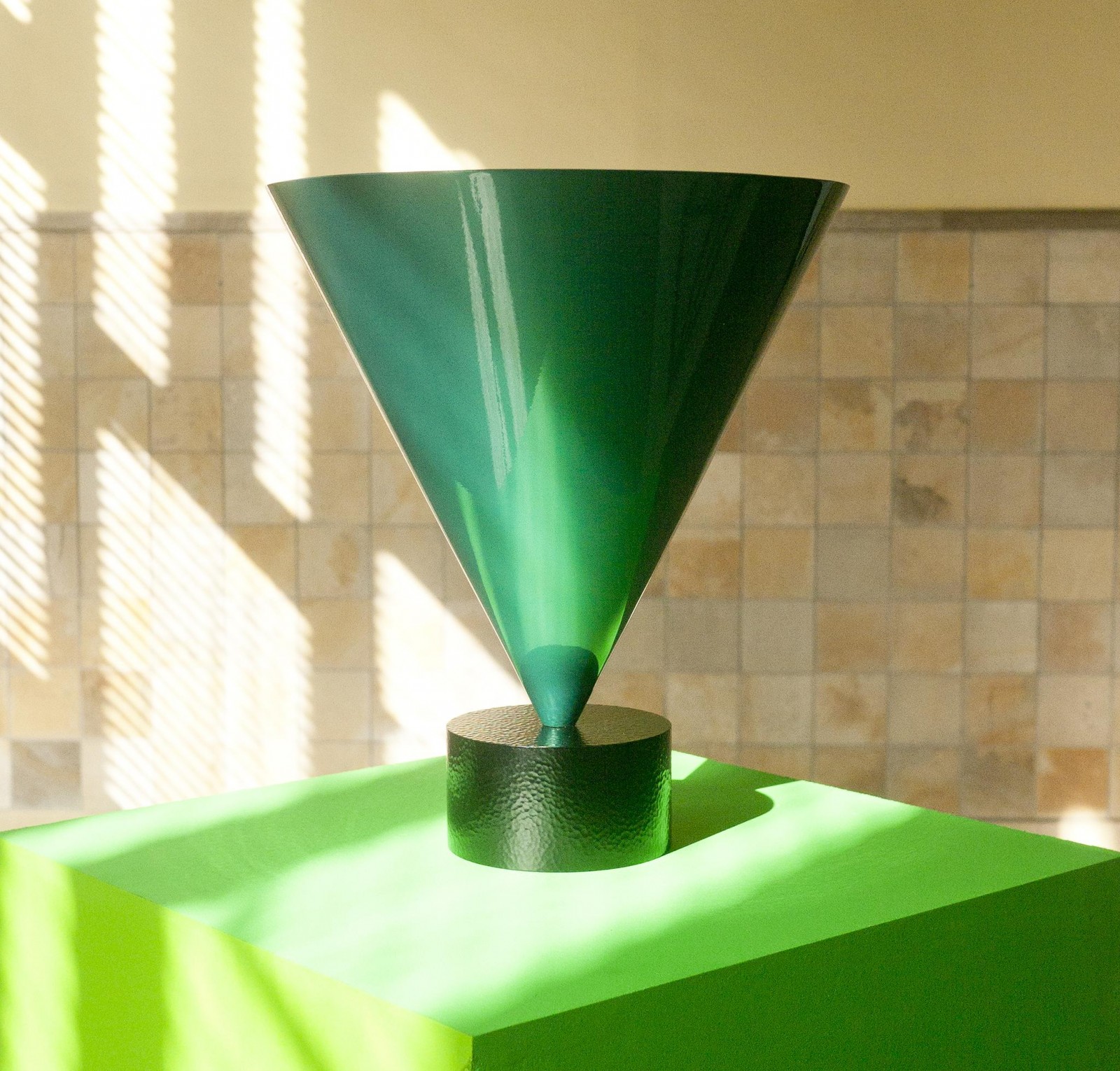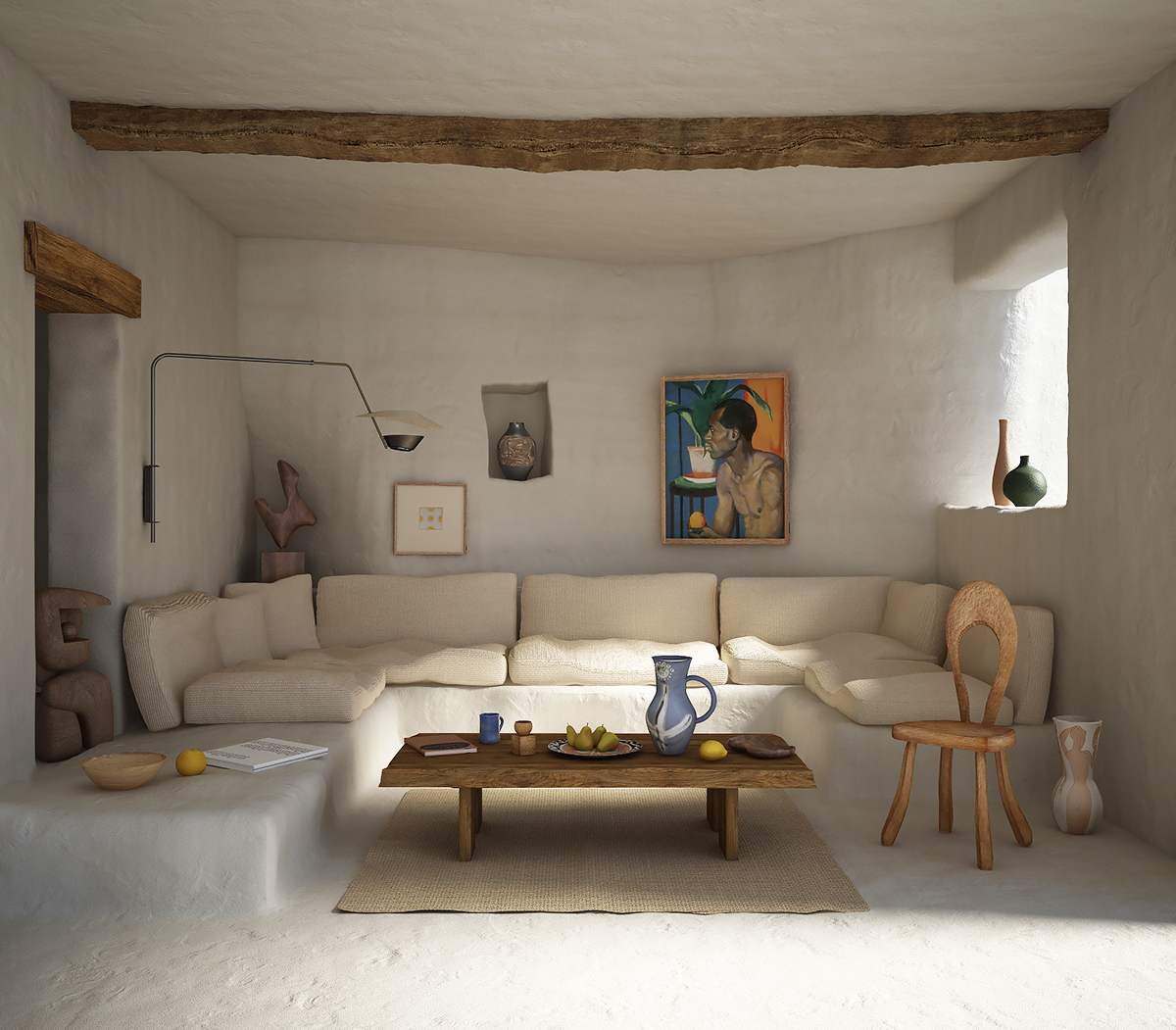
04.16.21
Up and Coming
3D Designer Riccardo Fornoni on Skateboarding, Digital Culture, and the Rise of NFTs
Selling imagined interiors as NFTs and creating 3D rendered villas for fictional vacation getaways, architect and designer Riccardo Fornoni of Cream Atelier is at the very vanguard of digital culture — or, more precisely, culture in general, considering how much of our daily lives and realities are spent and cultivated online these days. Fornoni first received attention last year, when — in the throes of a global pandemic — he teamed up with London-based interior designer and creative director Charlotte Taylor to create the fictional “Villa Saraceni” to satisfy lockdown society’s widespread wanderlust; Taylor has called it “her favorite project to date.” (You might also recognize some of his work from the images Sight Unseen commissioned last year to accompany our annual gift guides!) Based in Mantua, Italy, the 26-year old innovator is one to watch. We recently sat down for a video call with Fornoni to learn more about his fascinating practice.
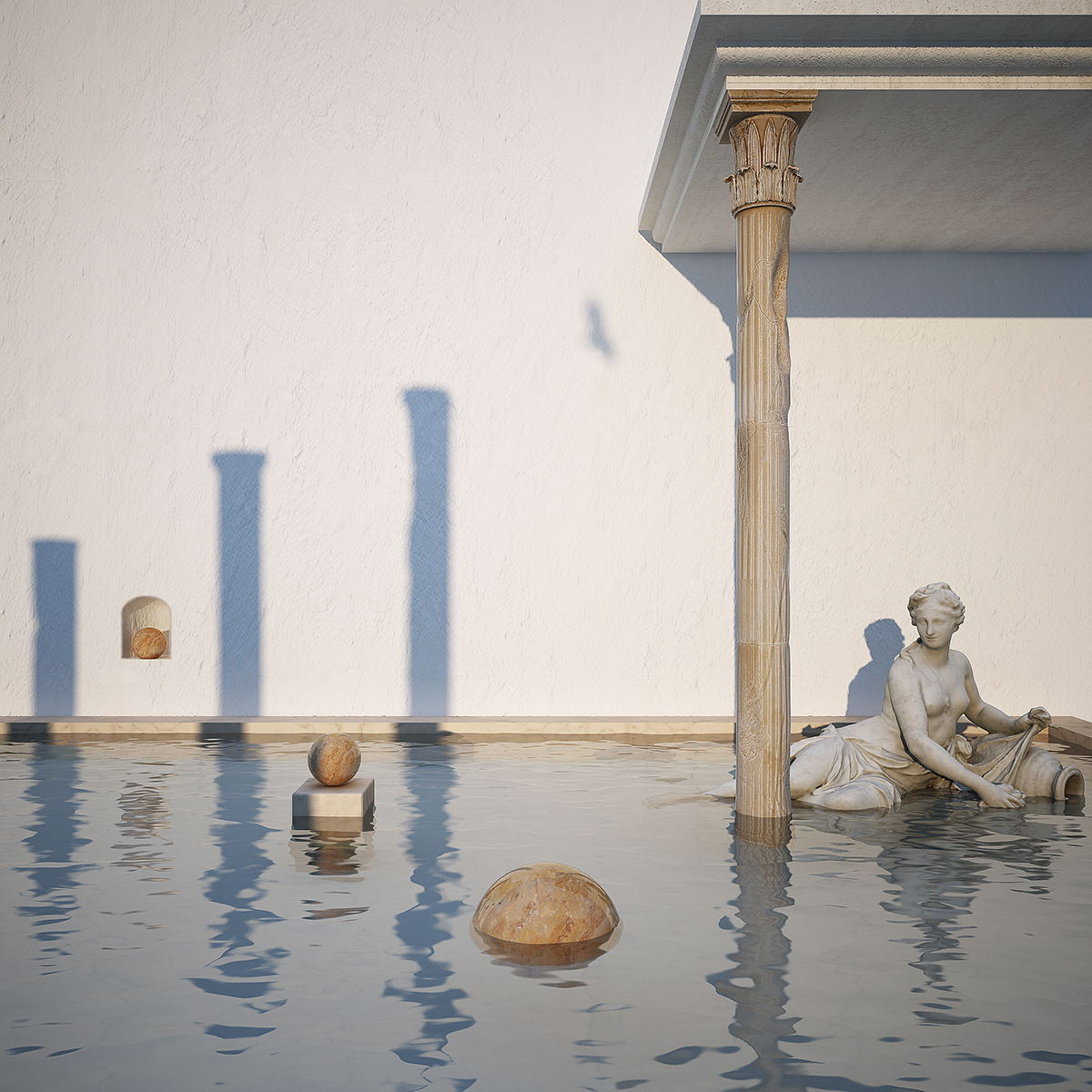
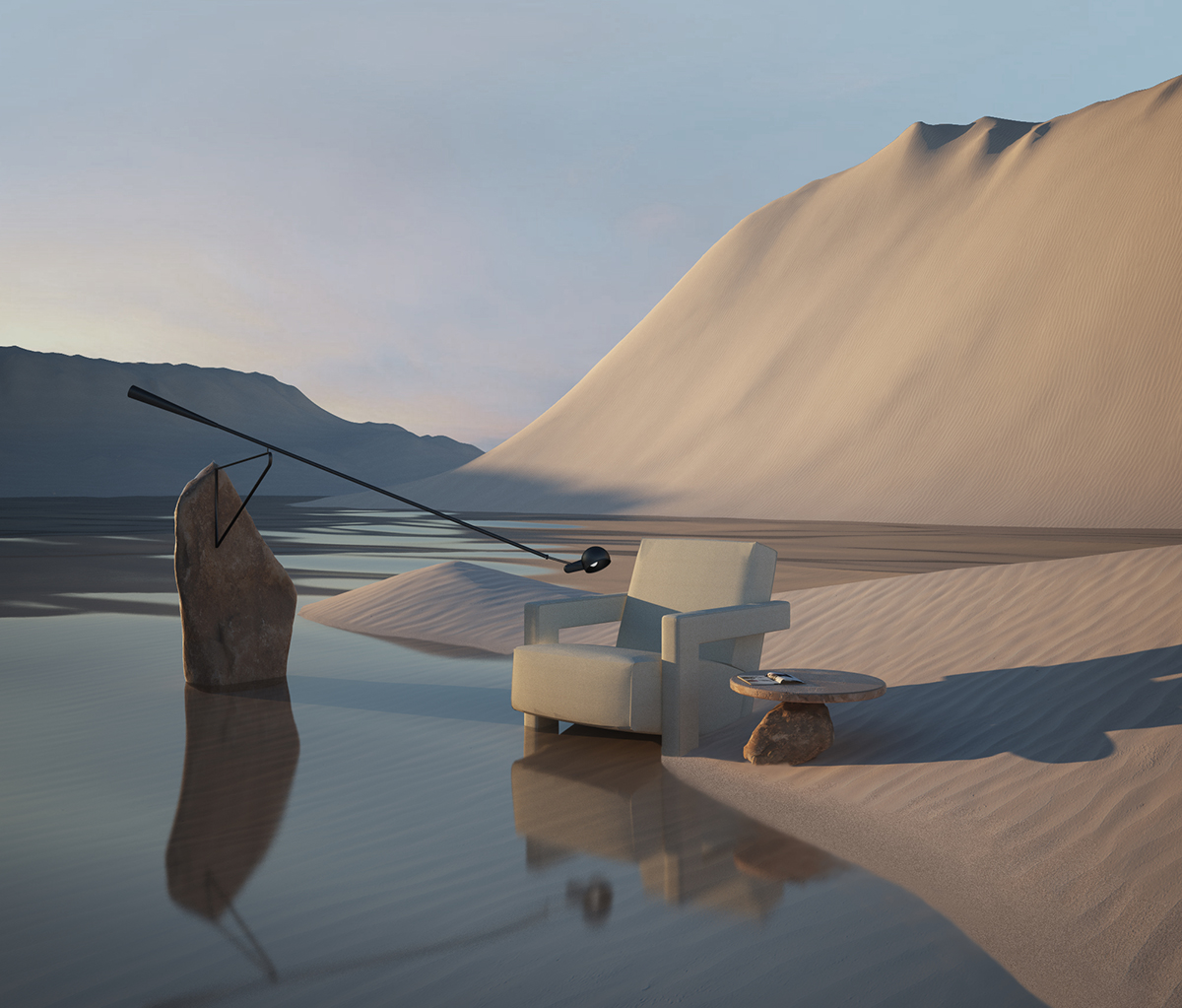
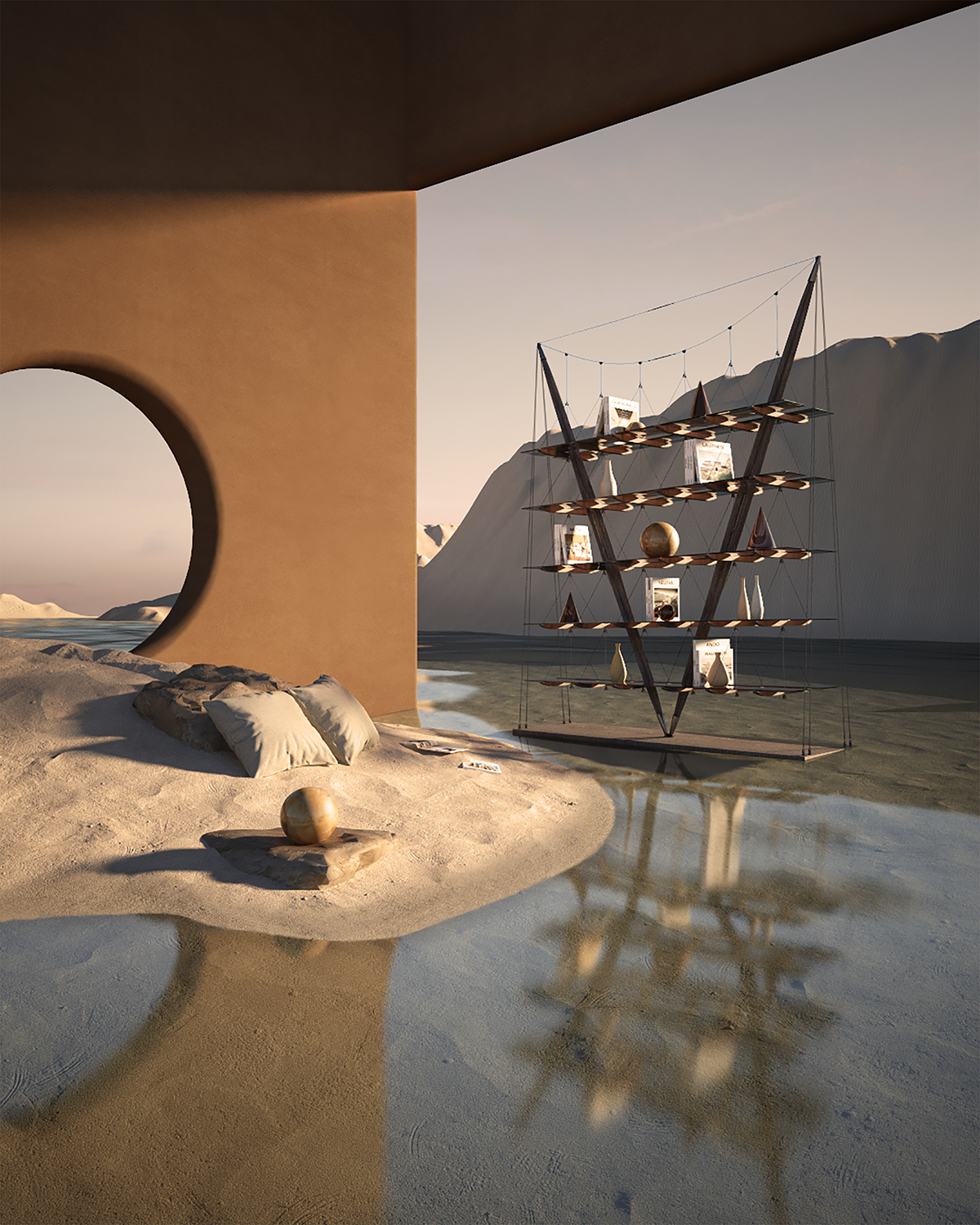
How did you get started in 3-D design?
I graduated from Politecnico di Milano in Architectural Design, after which I began to explore interior design and learned to do renderings and 3-D modeling. What started with practical renderings for interiors transformed into something more creative. I began to add surrealistic elements—I wanted to create ironic interactions between furniture and playful relationships between objects.
Can you give us and example of such ironic interactions and playful relationships?
I wanted to create something that wasn’t just practical or to serve another purpose, but a stand-alone image that could communicate beauty and ideas. “The Fisherman” for example (above, middle), is made outside of a commercial commission or other applicable usage. An armchair, side table, lamp and accessories are set in a sandy desert landscape at the edge of an oasis of water. The image features the Mod 265 Swing Arm Wall Lamp by Paolo Rizzatto, and the lamp swings toward the armchair as if it were a fishing rod to a phantom fisherman.
Another example is my image “Il Veliero,” (above, bottom) which started from the Veliero Library by Franco Albini. Veliero literally translates to sailboat, so I placed the bookshelf in water, with pillows on a sand embankment, like a luxurious, high design reading nook on an imaginary deserted island.
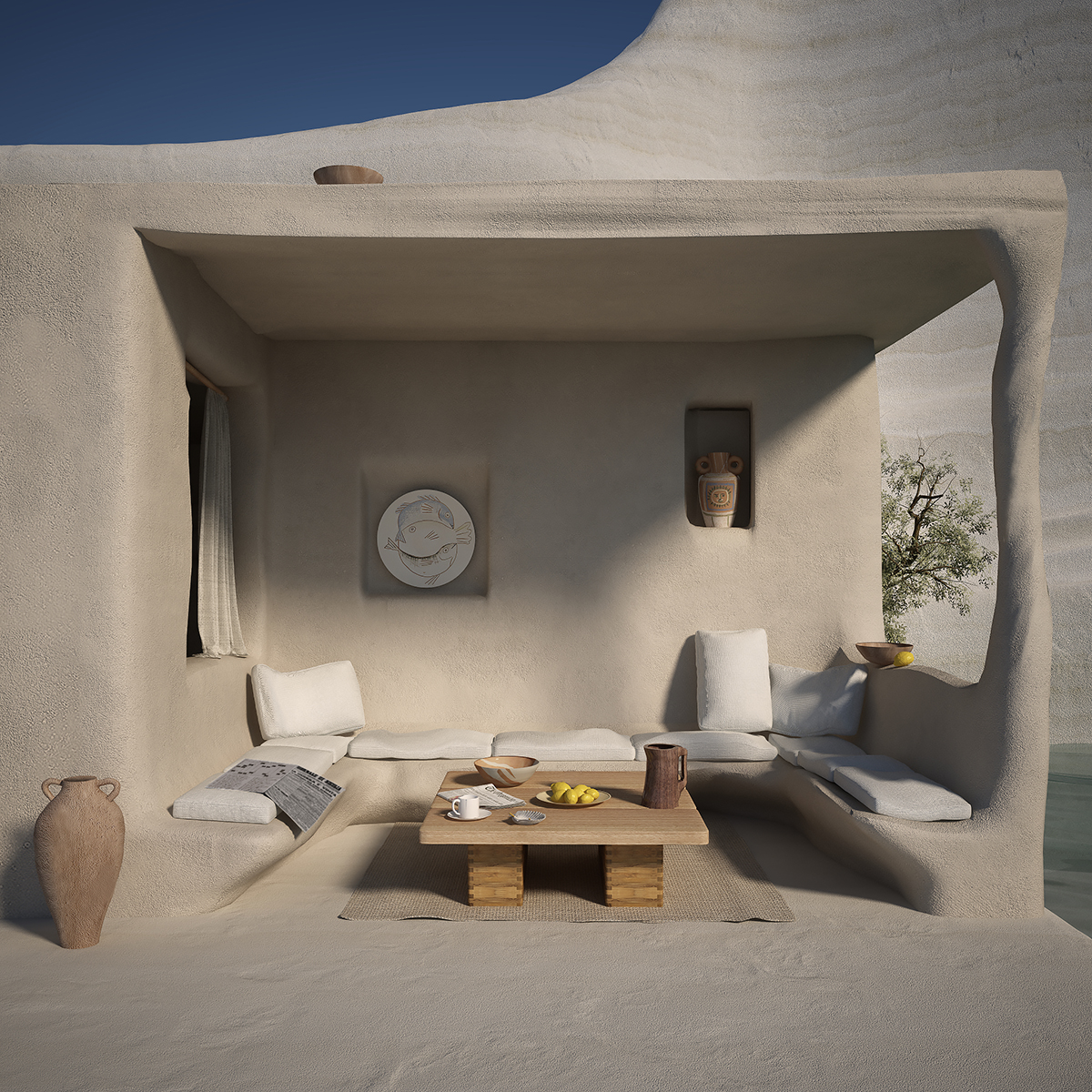
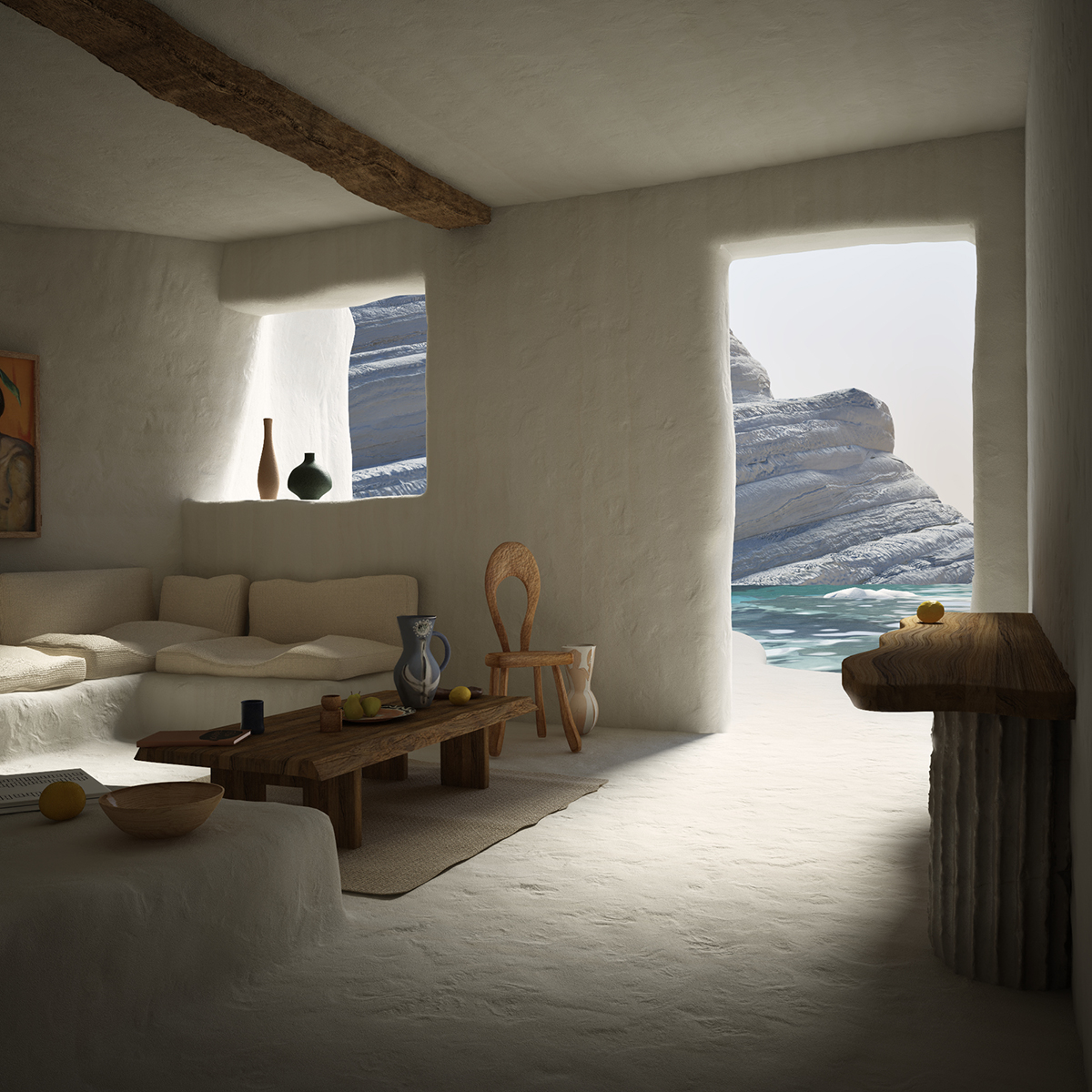
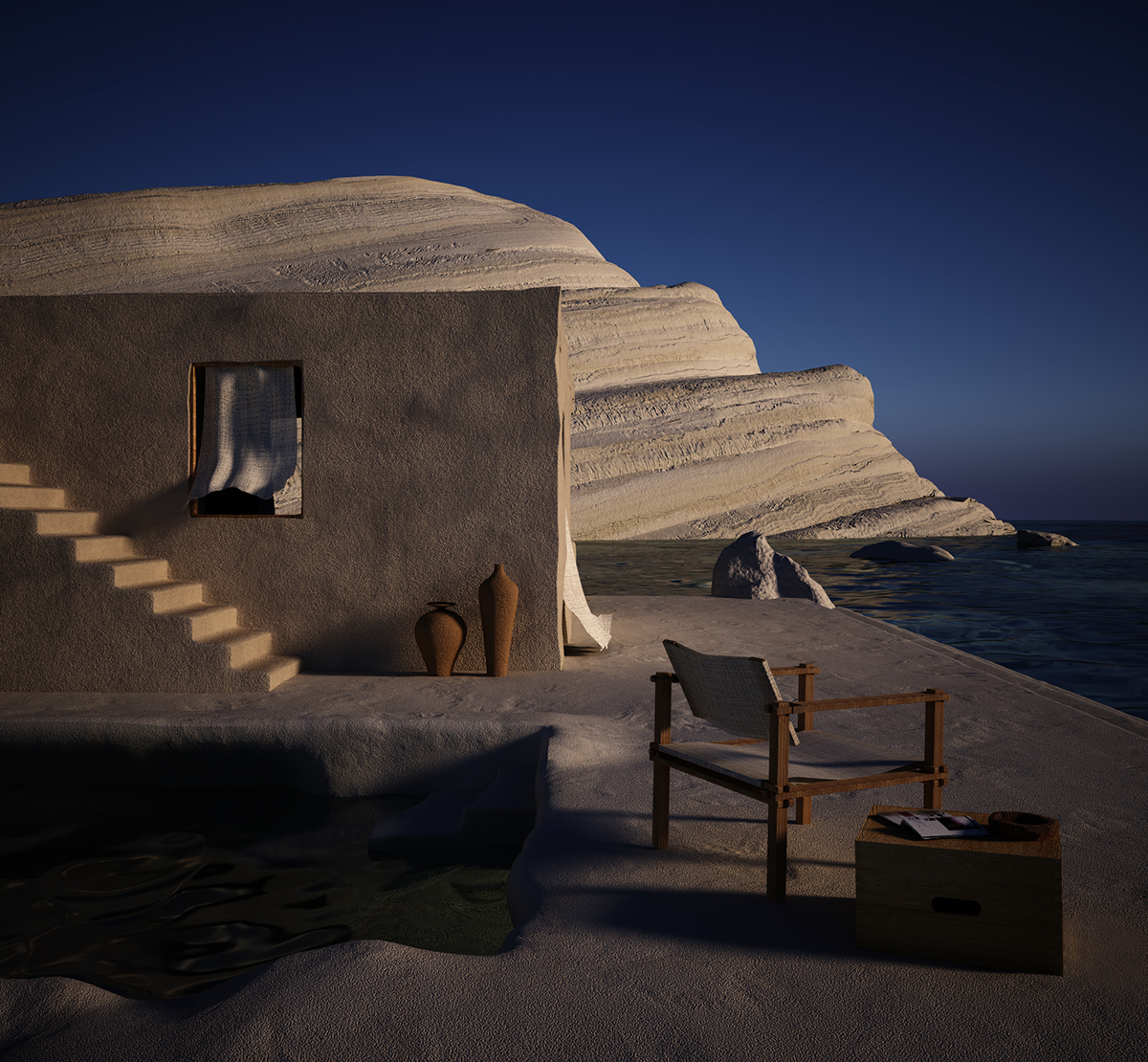
Speaking of imagery places, tell us more about your Villa Saraceni alla Scala dei Turchi project with Charlotte Taylor. It was completed last summer, at the height of the disappointment of would-be travelers shut in by the pandemic and travel lockdowns.
On top of pandemic travel restrictions, the villa I created with Charlotte could never be realized in reality, because Scala dei Turchi, a rocky cliff area in Sicily, is a protected UNESCO site. Even if you could build something there, it would be knocked out as soon as the water level comes up. We wanted to create something beautiful for the imagination. The interiors are appointed with Picasso ceramics, a Chandler McLellan sculpture, a 1950s wooden Brutalist Chair, Pierre Chapo coffee table, Cerf Volant wall lamp by Pierre Guariche, and a painting by Francis Campbell Boileau Cadell.
You’re able to bring together many different eras, cultures, places, and ideas together in one seamless scene. And now you’re taking these images into yet another realm by selling some of them as NFTs. Can you tell us more about your experience with NFTs?
I sold “The Fisherman” as an NFT on a site called Makersplace about a month ago and my latest piece up for auction as an NFT is “Mid 70s,” which started from a 1969 Borghesani wooden robot bar cabinet posted by designer Kelly Wearstler. The scene includes a 1951 Marco Zanuso “Lady Chair,” a 1950s Charlotte Perriand 527 Mexique wooden coffee table, and my version of Hockney’s 1967 A Bigger Splash painting in the background. Like Hockney, there are hints that someone was just in the scene—a rumpled pillow, phone off the hook, used glassware—but the lack of a figure forces the focus onto the architectural shapes and the objects, and the life of the scene itself.
We are also currently talking about possibly selling the Villa Saraceni as an NFT work. I never really thought about selling my images. I was just creating them to flex a creative muscle and to do something fun and interesting. When I sold “The Fisherman,” I was astounded. It’s the dream of most creators to live off their art, and the NFT market is allowing some people to do that.
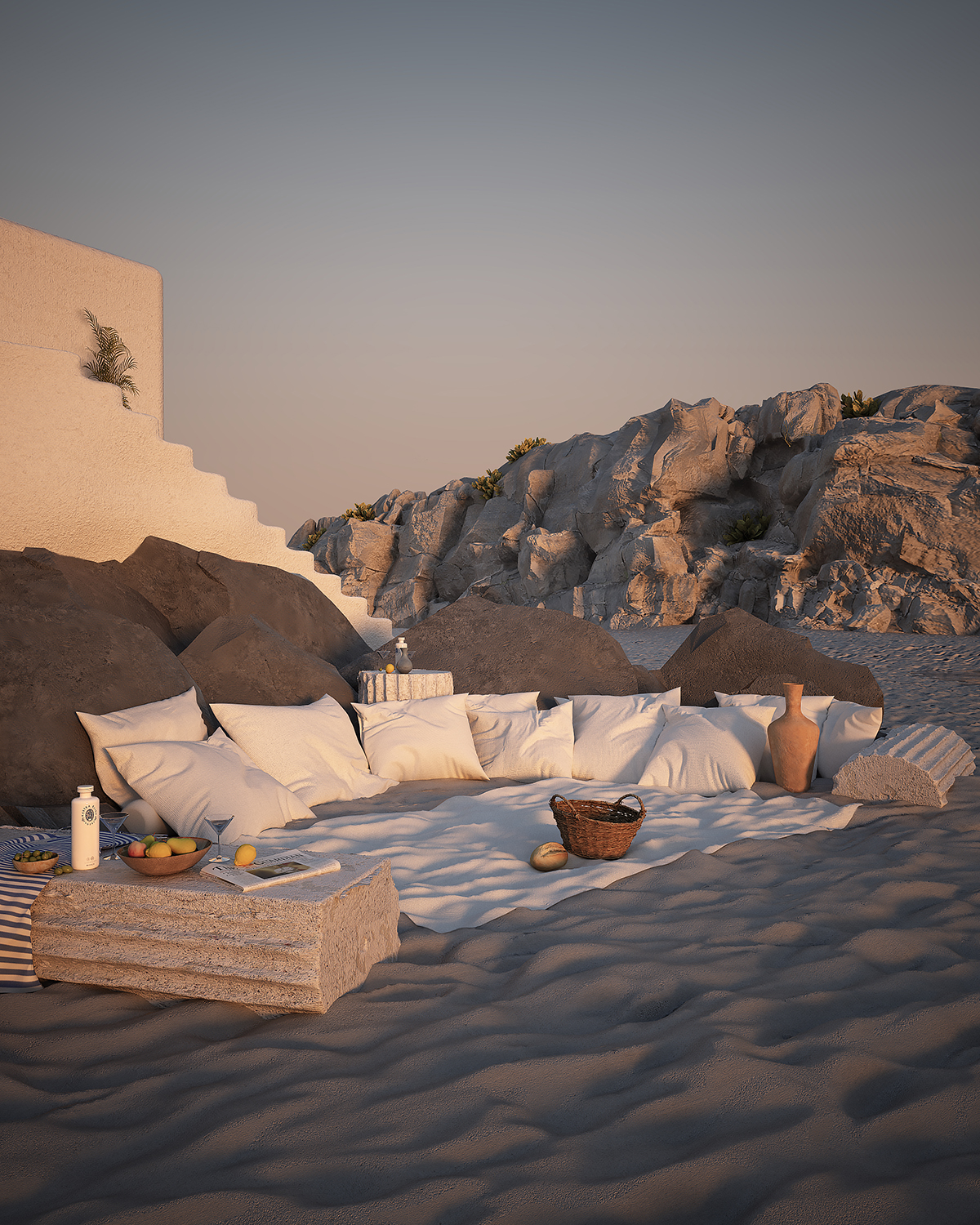
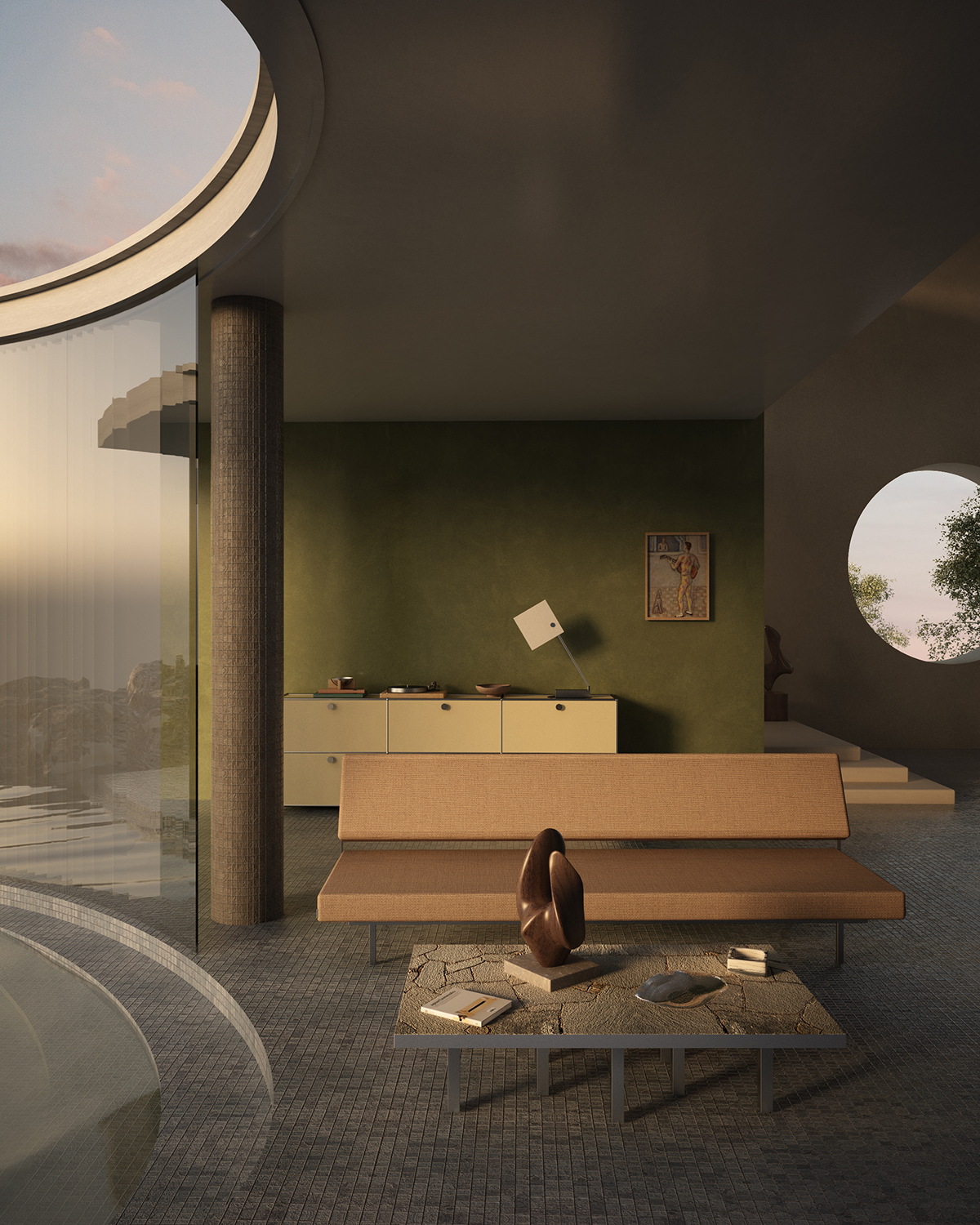
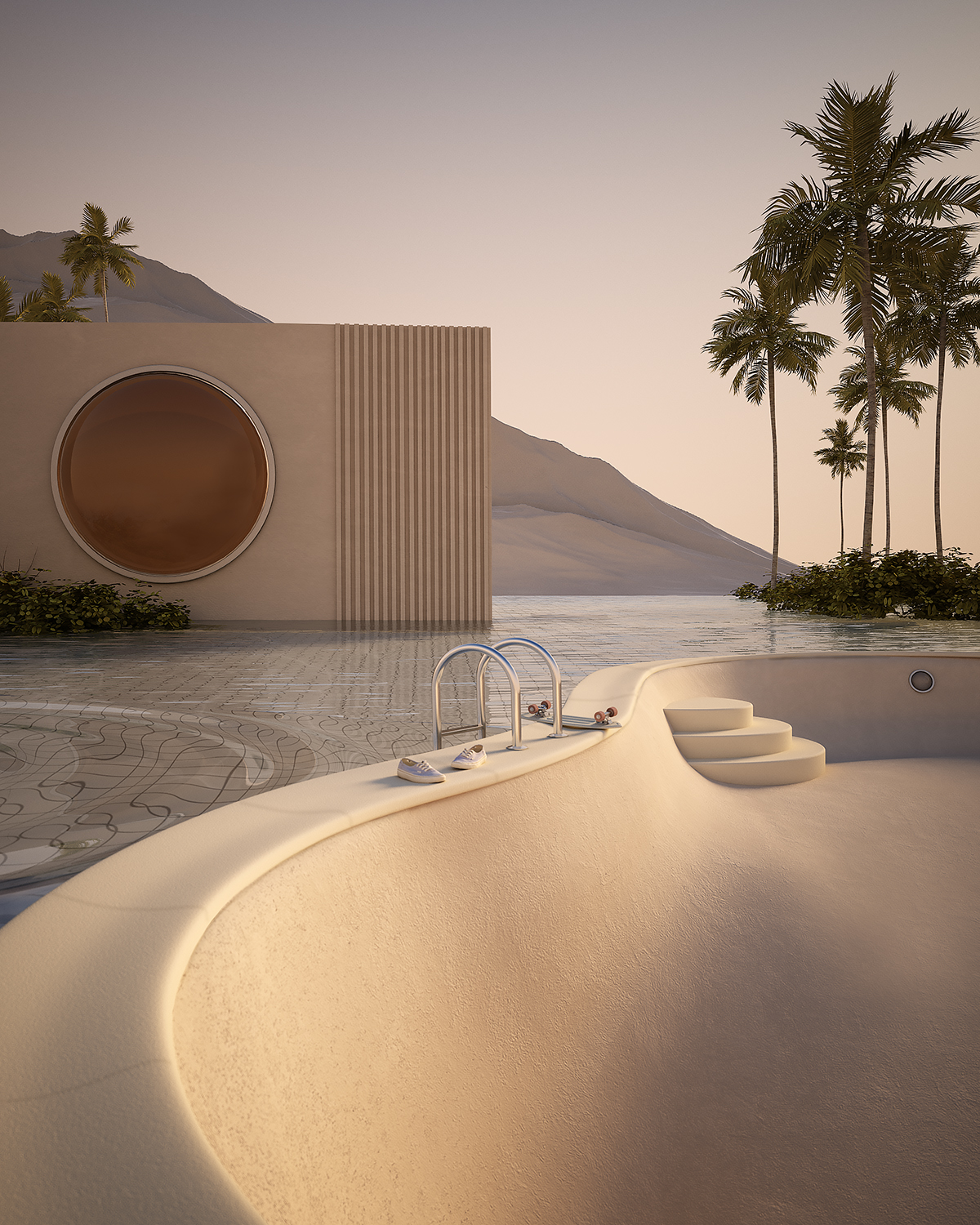
I notice that water is an important element in many of your pieces. Can you tell us more about your affinity for watery landscapes?
Water is not the easiest element to create in 3D, but I love the depth it can give to an image, and if it’s well done it adds a realistic touch. I miss being near water, going to the sea for the swim, and drying off in the warm sun, so perhaps that longing is partly why I add water to many of my pieces.
In addition to design, you’re an avid skateboarder. Can you talk about how your two disparate passions have merged in your latest work, “The Bird Bath”?
Skateboarding is my first love. My brand new work, “The Bird Bath” (above, bottom) is an homage to skateboarding, in particular the 1970s skateboarding culture spearheaded by Stacy Peralta, J. Adams, Tony Alva, and others in the Zephyr Boys skateboarding crew.
The image features a curvaceous empty swimming pool, like the kidney pool popularized by modernist Alvar Aalto in 1930s Europe, which Peralta and the Z-boys would seek out to skate in around Santa Monica and Venice in the 1970s. The pool is dry and empty, but right outside of the pool is a watery landscape. Ripples in the water, as well as a pair of Vans and a skateboard at the edge of the pool indicate that someone has jumped in. The allusion to an unseen but present human presence is something I borrowed from David Hockney, and his “splash” paintings, which indicated a swimmer had just entered the water, even though they remained unseen. In the background, the striated wall with a roundel window is a quotation from a Jacques Tati film.
The ancient Roman architect Vitruvius had three principals for the built environment: “Venustas, Utilitas, and Firmitas” or Beauty, Function, Durability. I would add to that two more principles from my own philosophy for life in general: skating and creating.
